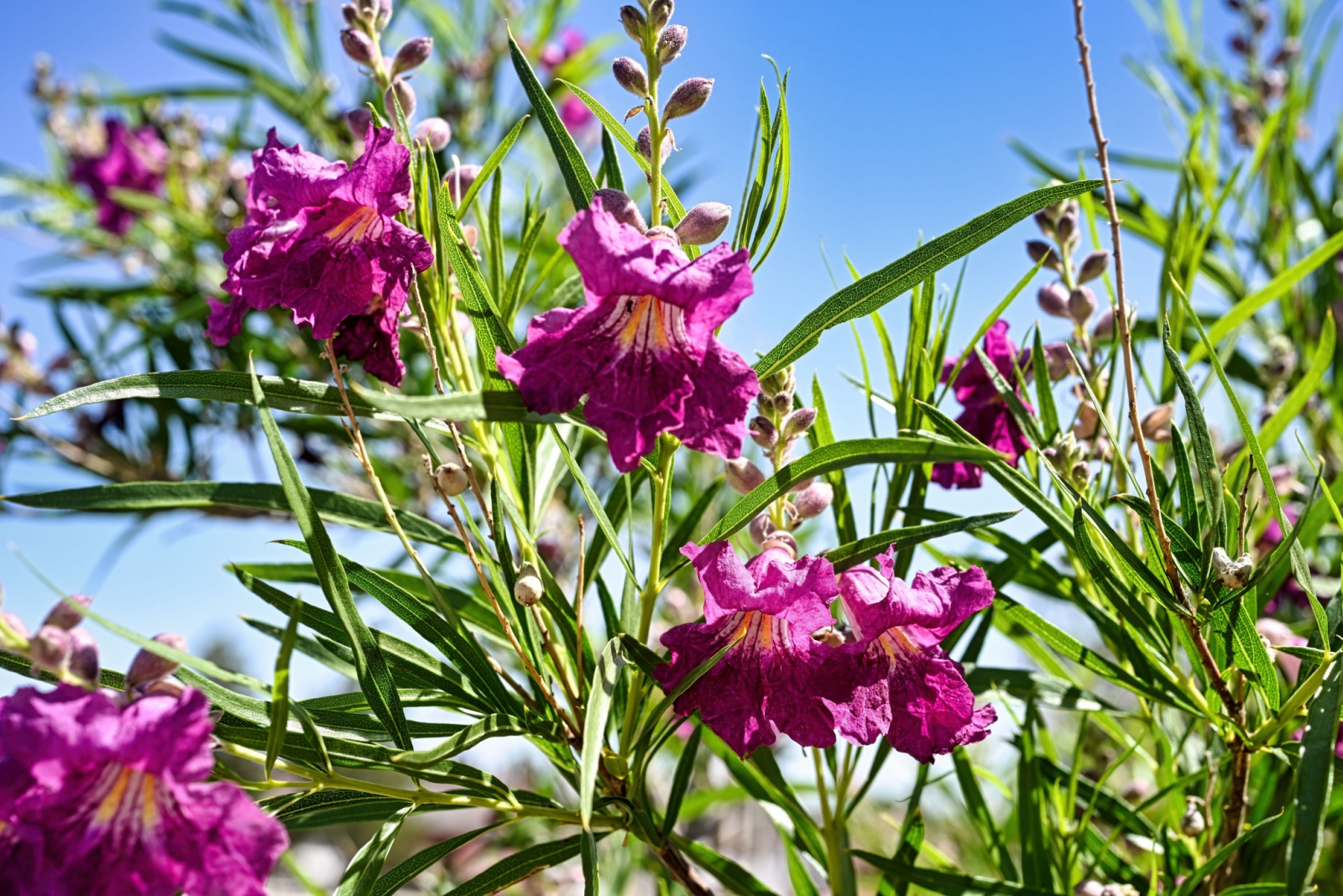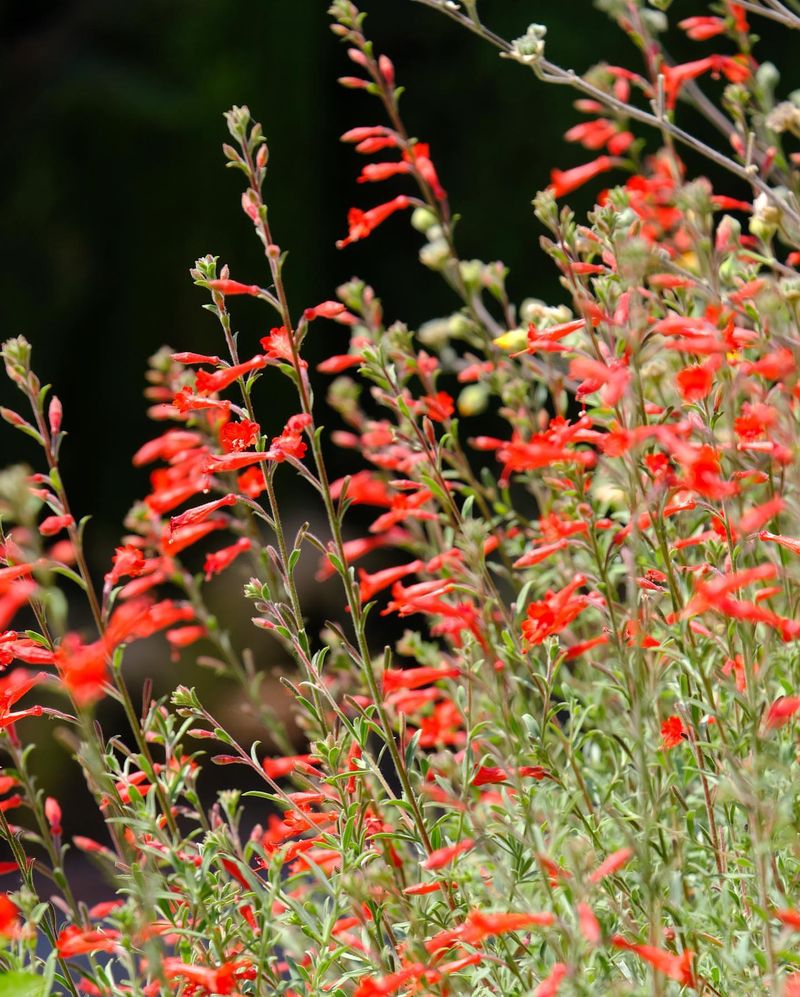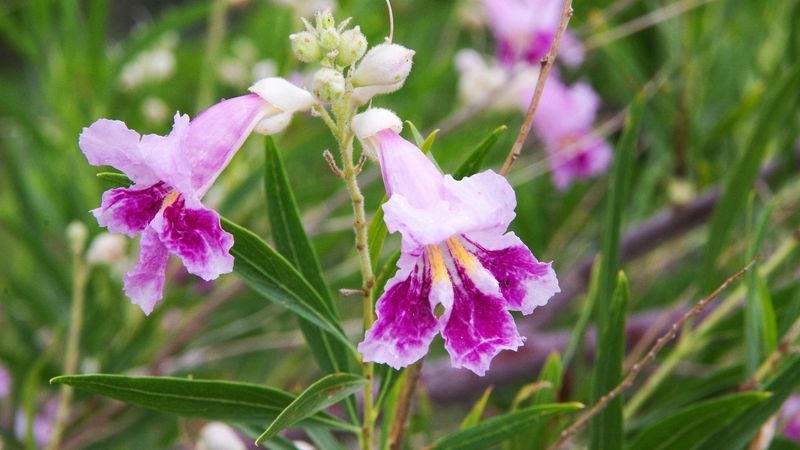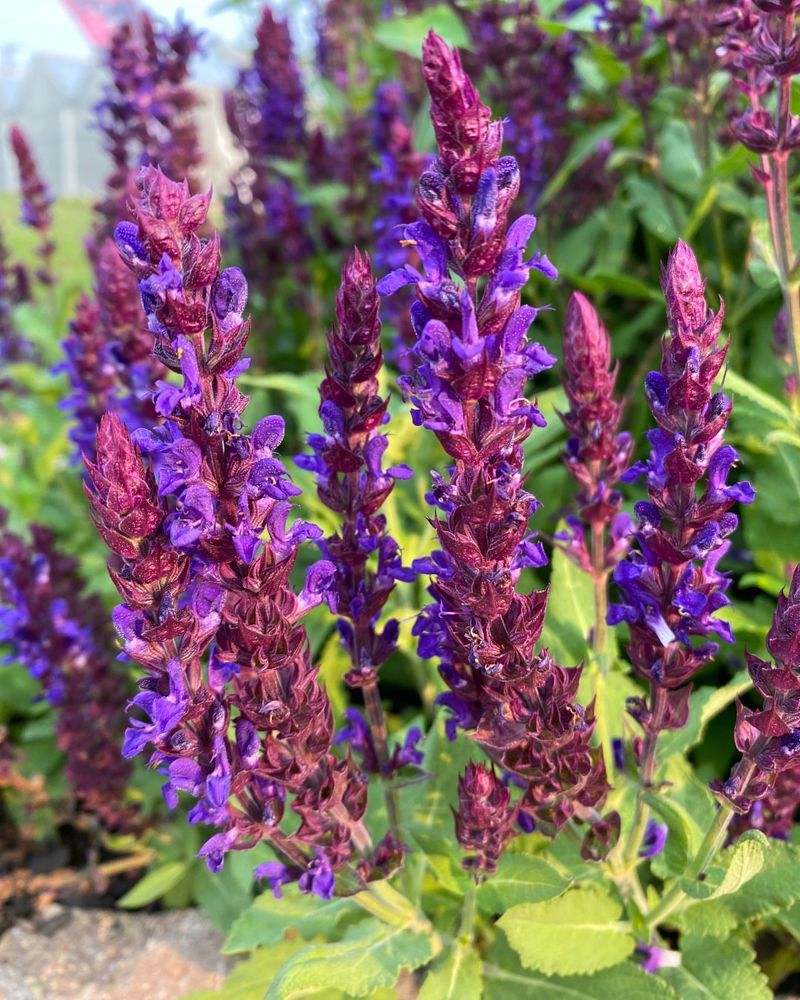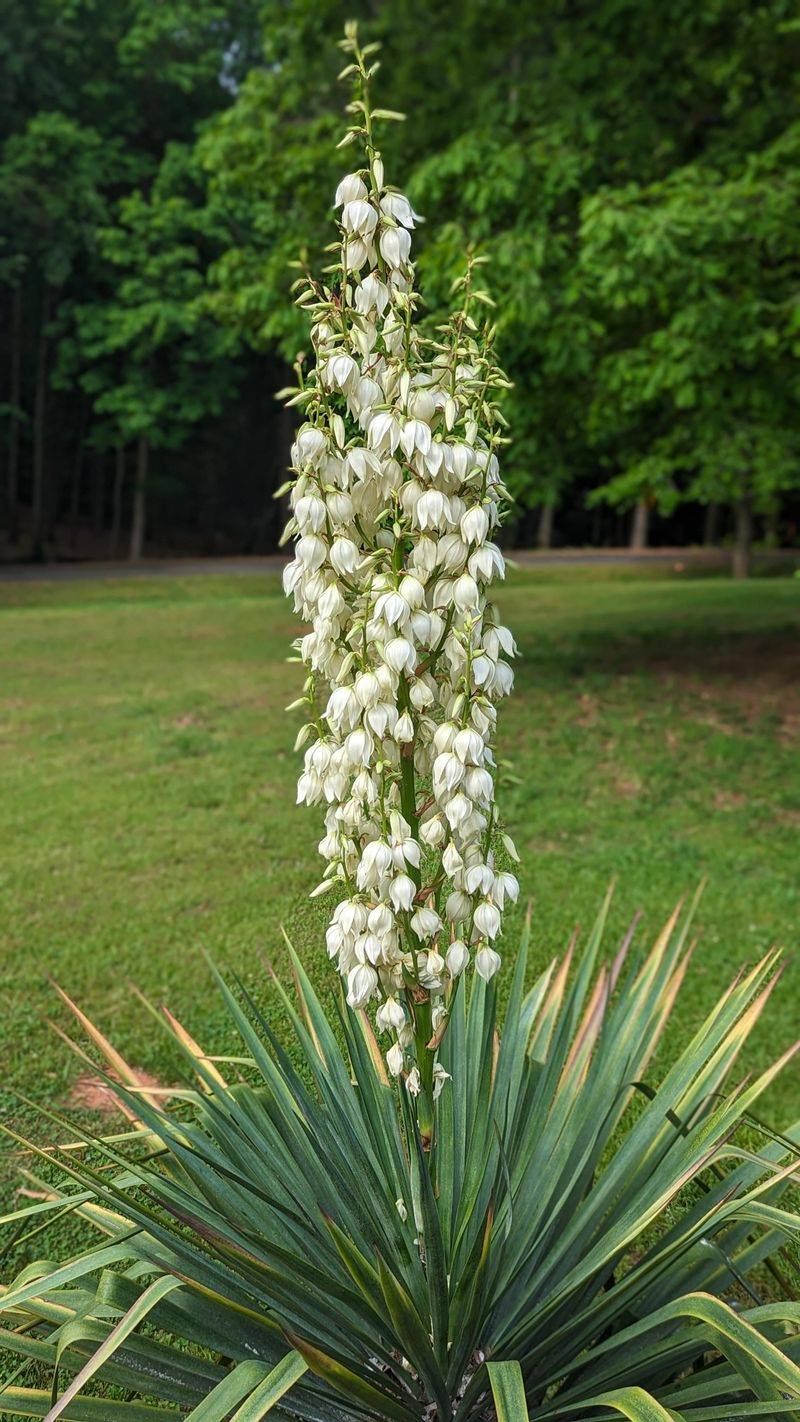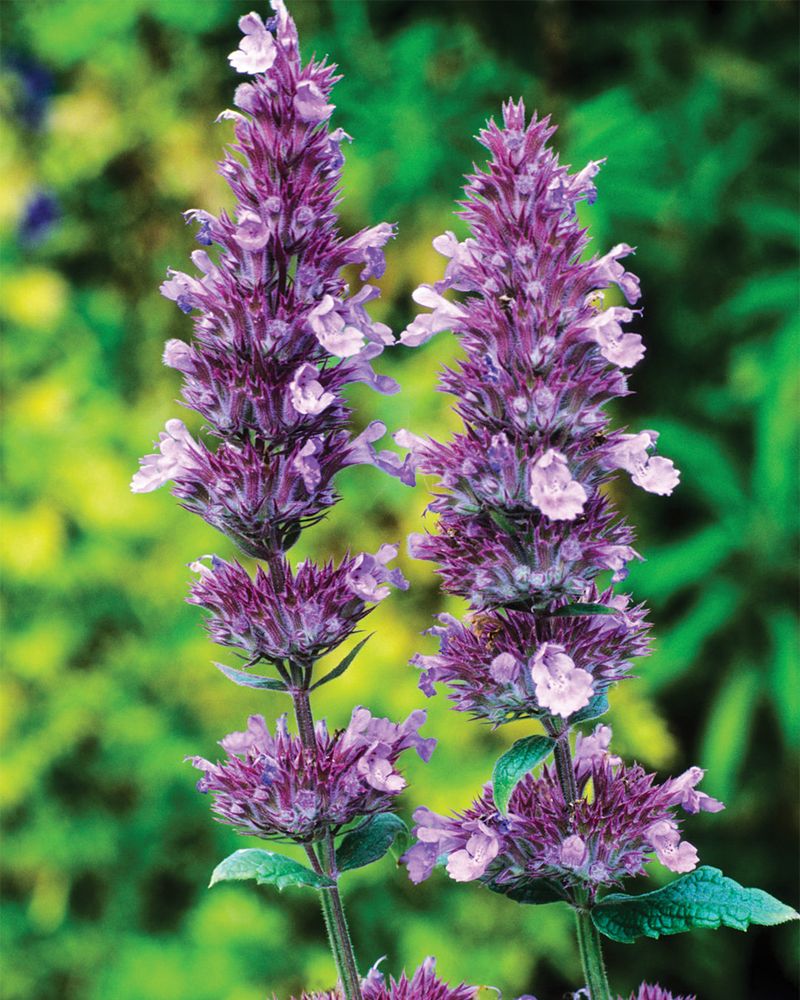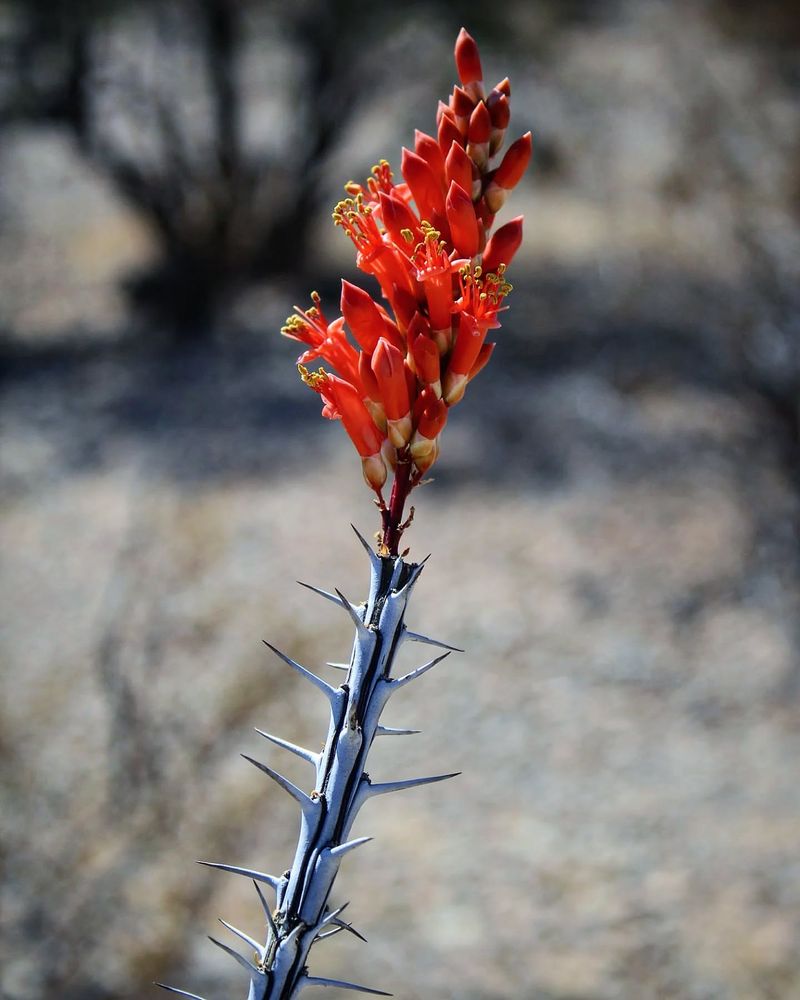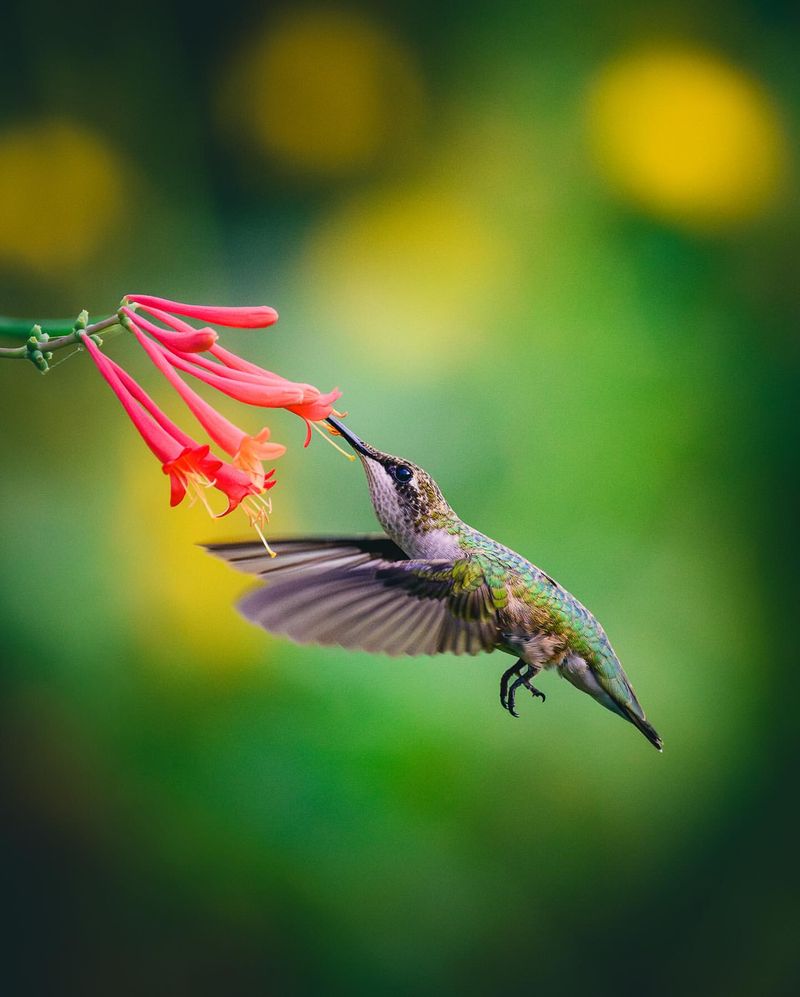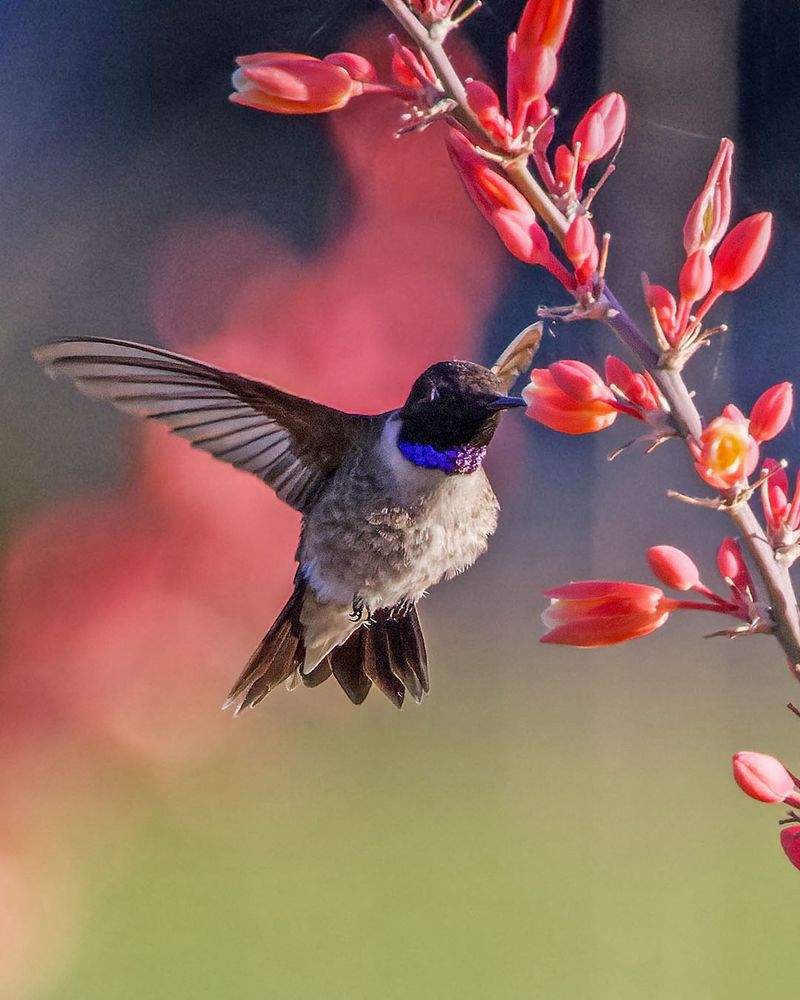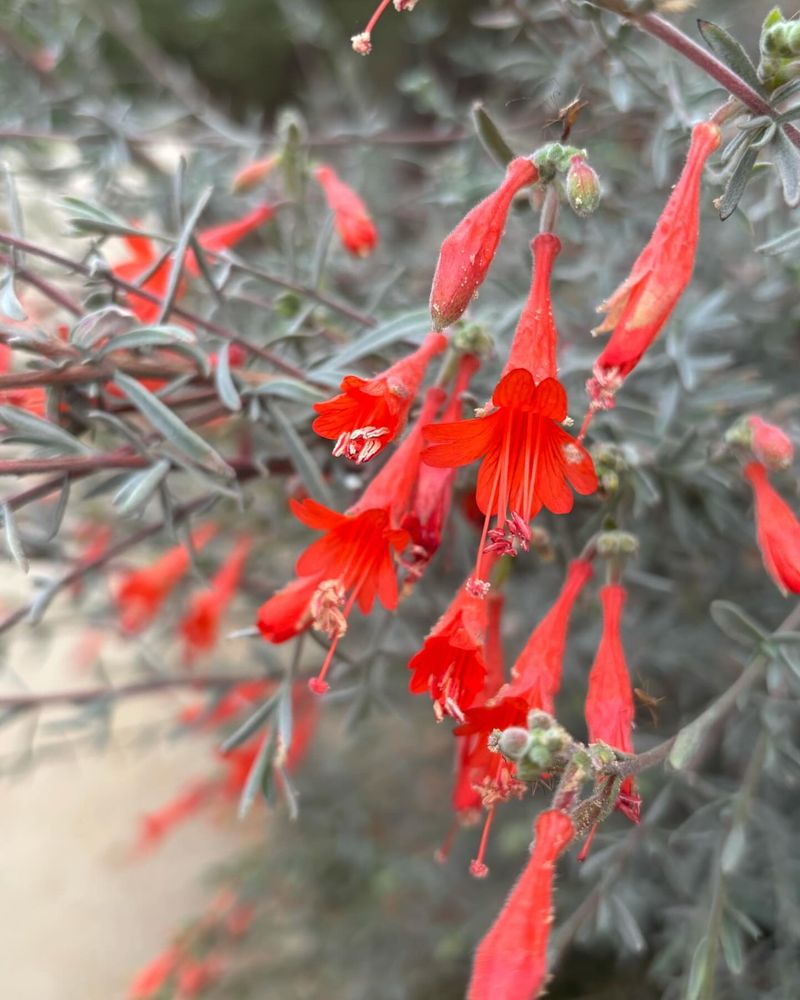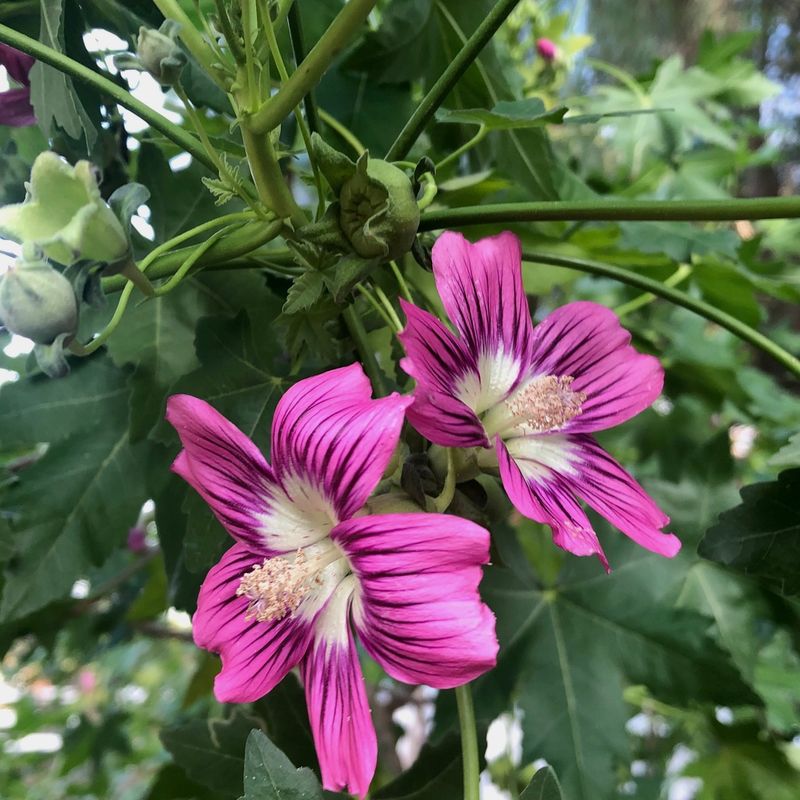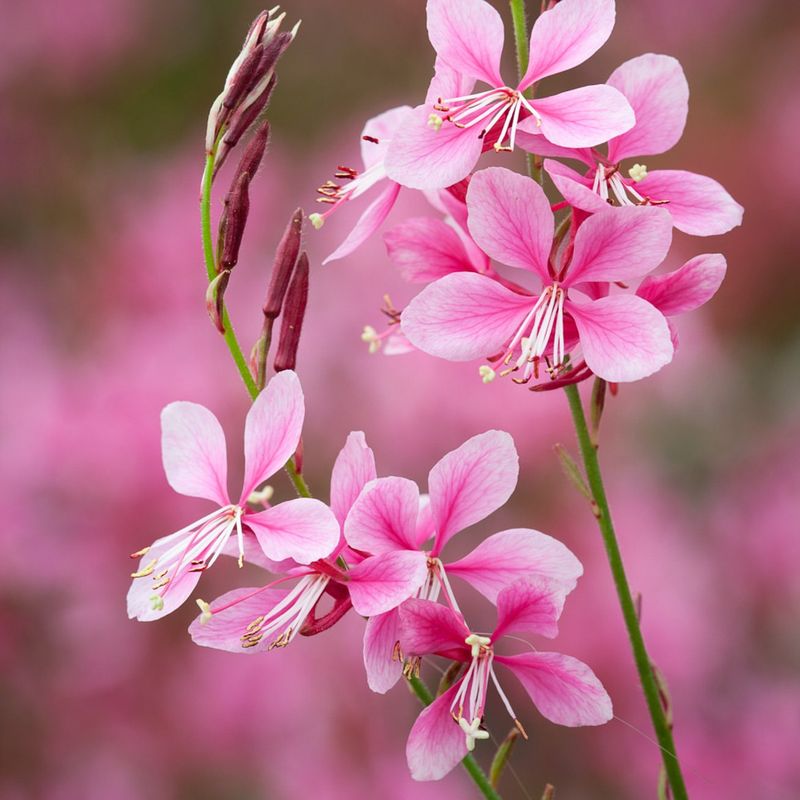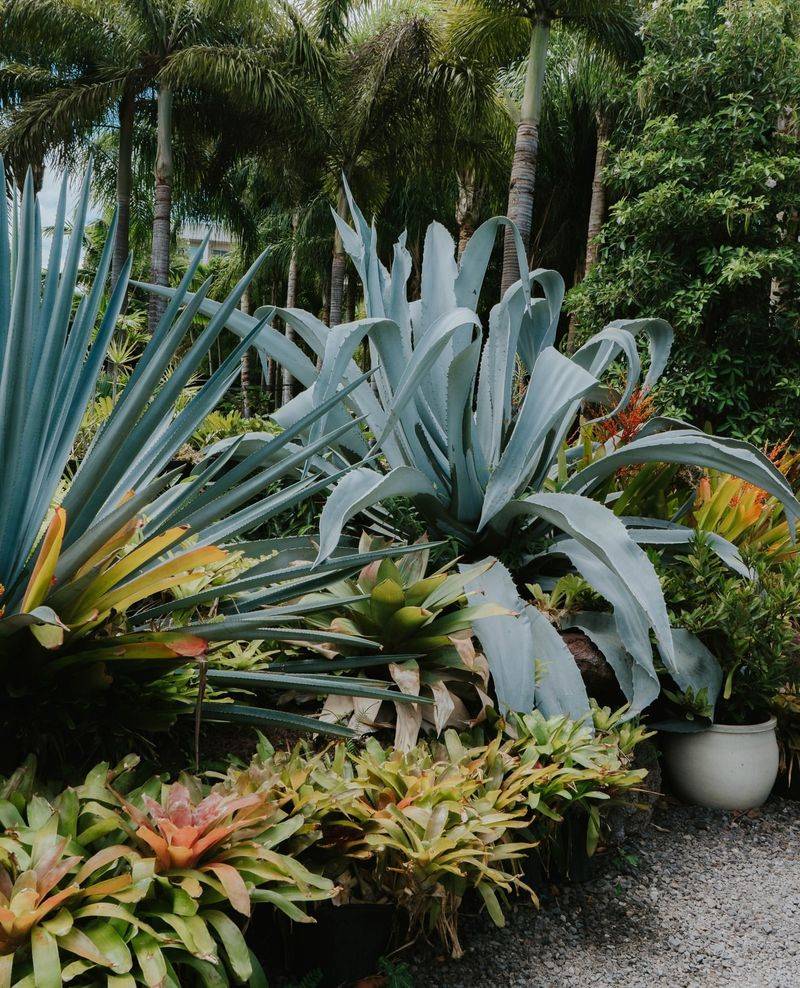Creating a garden that attracts hummingbirds while surviving New Mexico’s dry climate can be incredibly rewarding. These tiny, iridescent birds bring life and movement to any outdoor space, and the right plants can keep them coming back all season long.
With water conservation being so important in our state, drought-tolerant options that still produce nectar-rich flowers are the perfect solution.
1. Fiery Red Penstemons
Native to the Southwest, these vibrant trumpet-shaped flowers practically scream for hummingbird attention. Their scarlet blooms stand tall against the desert landscape from spring through summer.
Penstemons need almost no water once established, making them perfect for xeriscaping. Plant them in well-draining soil where they’ll receive full morning sun but some afternoon shade during the hottest months.
2. Desert Willow Magic
A stunning small tree that transforms New Mexico gardens with its orchid-like blossoms. Hummingbirds can’t resist the tubular pink, purple, or white flowers that appear from late spring through summer.
Growing up to 20 feet tall, desert willows provide both nectar and nesting opportunities. Native to arroyos, they thrive in poor soil and can survive on rainfall alone once their roots are established.
3. Salvia Splendor
Salvias rank among the absolute favorites for hummingbirds, with their long, tubular flowers perfectly shaped for those specialized beaks. The intense blue, purple, or red blooms appear from spring through fall, creating a reliable nectar source.
Mexican bush sage and autumn sage varieties perform exceptionally well in New Mexico’s climate. Their aromatic foliage naturally repels deer and rabbits while requiring minimal irrigation after establishment.
4. Yucca’s Surprising Appeal
Most gardeners don’t realize yuccas are hummingbird magnets! Their dramatic white flower stalks rise above spiky foliage, creating natural garden architecture while providing sweet nectar.
Perfectly adapted to New Mexico’s harsh conditions, yuccas thrive in full sun and sandy soils. The soap tree yucca (Yucca elata) and banana yucca (Yucca baccata) are particularly attractive native species that need virtually no supplemental water.
5. Agastache Allure
Commonly called hummingbird mint or hyssop, these aromatic perennials produce spikes of tubular flowers in shades of orange, pink, and purple. Their minty fragrance fills the garden while their nectar fills hungry hummingbird bellies.
Sunset hyssop varieties are particularly drought-tolerant once established. Plant them in well-draining soil where they’ll receive at least 6 hours of sun daily for the most prolific blooming and strongest stems.
6. Ocotillo’s Crimson Crowns
Rising like living sculptures from the desert floor, ocotillos burst into brilliant red flower clusters at their branch tips after rain. These unusual plants drop their leaves during drought, then quickly leaf out again when moisture returns.
Hummingbirds adore the nectar-rich tubular blossoms that appear primarily in spring. Plant ocotillos in the hottest, driest part of your yard with excellent drainage and minimal irrigation for a true desert showpiece.
7. Coral Honeysuckle Vines
Unlike its invasive Japanese cousin, native coral honeysuckle (Lonicera sempervirens) offers hummingbirds trumpet-shaped blooms in coral-red hues without taking over the garden. The tubular flowers appear in clusters from spring through fall.
This semi-evergreen vine needs something to climb on—a trellis, fence, or arbor works perfectly. Remarkably drought-tolerant once established, it performs best with occasional deep watering during extended dry periods.
8. Hesperaloe’s Hummingbird Highway
Red yucca isn’t actually a yucca at all! This striking plant sends up 5-foot tall flower stalks covered in tubular coral blooms that hummingbirds find irresistible from late spring through summer.
Despite its delicate-looking flowers, hesperaloe is incredibly tough. Its grasslike blue-green foliage forms an attractive clump year-round, while requiring almost no supplemental water once established. Yellow-flowering varieties are also available for garden variety.
9. Zauschneria’s Fiery Display
Also called California fuchsia or hummingbird trumpet, this low-growing perennial explodes with scarlet-orange tubular flowers in late summer when many other plants have finished blooming. The silvery foliage adds year-round interest between flowering seasons.
Perfect for rock gardens or hot, dry slopes, zauschneria spreads slowly to form a beautiful groundcover. Plant it where you can watch hummingbirds hover as they sip from the perfectly-shaped blooms during fall migration.
10. Chuparosa’s Desert Charm
With a name that literally means “hummingbird sucker” in Spanish, chuparosa delivers on its promise! This woody shrub produces masses of tubular red flowers that hummingbirds find impossible to resist.
Native to the Sonoran Desert, chuparosa laughs at drought and heat. Its bloom time extends from winter through spring, providing vital nectar when few other plants are flowering. Minimal pruning after flowering helps maintain its natural shape.
11. Cheerful Gaura Blooms
Dancing like butterflies in the slightest breeze, gaura’s delicate pink or white flowers appear on wand-like stems from spring through fall. Hummingbirds zip between the open blooms gathering nectar throughout the long flowering season.
Extremely heat and drought tolerant, gaura thrives in poor soil with minimal care. Its airy appearance makes it perfect for softening garden edges or filling spaces between more structured plants. The ‘Siskiyou Pink’ variety is especially floriferous.
12. Stunning Century Plant
For dramatic garden impact and unexpected hummingbird attraction, few plants match the century plant (Agave americana). When mature, it sends up an enormous 20-foot flower stalk loaded with yellow blooms rich in nectar.
While the plant dies after flowering, it produces many offsets beforehand to continue its legacy. Plant century plants where their architectural blue-gray foliage can be appreciated year-round. No supplemental water needed—they thrive on neglect!

